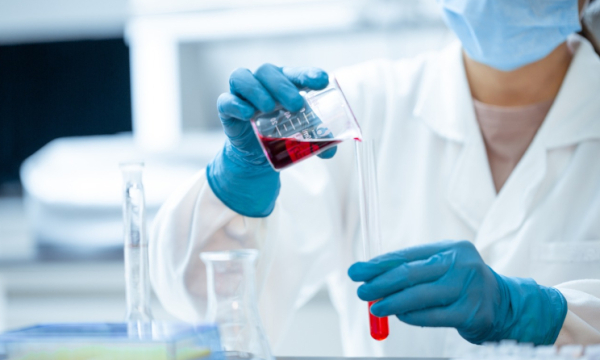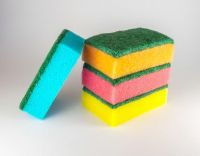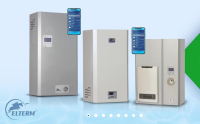Achieving this standard demands meticulous adherence to specific cleaning protocols and a deep understanding of contamination sources and control measures.
I. Introduction
Importance of achieving Grade 4 Cleanliness in Manufacturing
The importance of Grade 4 Cleanliness in manufacturing must be considered. It is often a critical requirement in aerospace, semiconductor manufacturing, and pharmaceuticals, where product performance, reliability, and safety are paramount. A failure to meet these cleanliness standards can lead to product defects, yield reductions, and in some cases, catastrophic failures.
Overview of the blog content
This blog post delves into the specific cleaning guidelines that help achieve Grade 4 Cleanliness. We will explore the different wet-cleaning processes, performance enhancement techniques, and remedial cleaning methods, providing a detailed and comprehensive guide for professionals aiming to meet this exacting standard. Join us as we navigate the intricacies of these cleaning protocols, enhancing our understanding of how they contribute to the achievement and maintenance of Grade 4 Cleanliness.
II. Understanding Grade 4 Cleanliness
Detailed exploration of what Grade 4 Cleanliness entails
Grade 4 Cleanliness is a stringent classification that demands rigorous control over environmental and surface contamination. In essence, it represents a state where the count of particulate matter on surfaces and in the environment is limited to a very low level. This level of cleanliness is often specified in industries such as semiconductor manufacturing, pharmaceuticals, and aerospace, where the presence of even minute contaminants can dramatically affect product quality, performance, and safety.
The specific requirements and standards of Grade 4 Cleanliness
The requirements of Grade 4 Cleanliness involve controlling the number and size of particulates and managing other forms of contamination, such as chemical residues. These requirements necessitate stringent controls over the manufacturing environment, handling protocols, and cleaning processes. They may also extend to control measures for suppliers, given that contamination can be introduced at any stage of the manufacturing process.
The role of cleaning in achieving this level of cleanliness
Achieving Grade 4 Cleanliness heavily relies on comprehensive and effective cleaning processes. Cleaning plays a crucial role in not only removing existing contamination but also in preventing potential future contamination. By systematically eliminating contaminants from surfaces and the environment, cleaning processes are a key enabler in achieving and maintaining Grade 4 Cleanliness, thereby supporting product quality, performance, and safety.
III. Wet-cleaning Processes
Introduction to wet-cleaning and its role in achieving Grade 4 Cleanliness
Wet-cleaning is a cornerstone of cleanliness protocols in many industries. It plays a pivotal role in achieving Grade 4 Cleanliness. Wet cleaning is a process that involves the use of liquids, such as water or solvents, to remove contaminants from surfaces. It is favored for its effectiveness in removing various types of contamination, including particulates, oils, and chemical residues.
Detailed analysis of various wet-cleaning methods
There are various methods within the broad umbrella of wet-cleaning processes. One common method is immersion cleaning, where parts are submerged in a cleaning solution, often combined with ultrasonic agitation to enhance cleaning effectiveness. Another technique is spray cleaning, where a high-pressure cleaning solution is used to dislodge contaminants. Other methods include steam cleaning, where high-temperature steam removes contaminants, and solvent cleaning, where specific solvents are applied to dissolve particular contaminants.
How each method contributes to achieving cleanliness Grade 4
Each method offers specific advantages and contributes to achieving Grade 4 Cleanliness in different ways. For instance, immersion cleaning with ultrasonic agitation can effectively dislodge microscopic particles from intricate or hard-to-reach surfaces. On the other hand, spray cleaning can be effective for larger surfaces or removing heavier soiling. Steam cleaning is particularly effective for sanitization and solvent cleaning can target specific, hard-to-remove contaminants.
Case study or practical example of wet-cleaning in action
To illustrate the effectiveness of wet-cleaning processes, let's consider a case study from the semiconductor industry. In the production of semiconductor wafers, even minute particles can lead to defects, necessitating extremely high cleanliness standards. Wet-cleaning processes, often involving a combination of methods, are used extensively in wafer production. For example, a process might involve an initial ultrasonic cleaning in a detergent solution to remove particles, followed by a rinse in deionized water to remove detergent residues. This could be followed by a solvent clean to remove any remaining organic contamination. The result is a wafer surface that meets the stringent cleanliness requirements of semiconductor manufacturing, demonstrating the effectiveness and importance of wet-cleaning processes in achieving Grade 4 Cleanliness.
IV. Performance Enhancement Techniques
Introduction to performance enhancement techniques in cleaning
While the basic wet-cleaning processes play a vital role in achieving Grade 4 Cleanliness, their efficacy can often be significantly enhanced with the use of performance enhancement techniques. These techniques involve augmenting the basic cleaning process with additional measures that amplify the cleaning effect, ensuring a higher level of cleanliness.
A detailed explanation of different techniques such as heating, ultrasounds, solution movement, etc.
Various performance enhancement techniques exist, each with its unique advantages. Heating, for instance, is often used to increase the effectiveness of cleaning solutions by improving their ability to dissolve contaminants. Ultrasound, another commonly employed technique, creates cavitation bubbles that produce liquid micro-jets, effectively dislodging particles from surfaces. Solution movement, involving the agitation or circulation of cleaning solutions, can also enhance cleaning performance by preventing the settling of dislodged particles and promoting uniform contact between the solution and the surface.
The role and impact of these techniques in achieving Grade 4 Cleanliness
The impact of these performance enhancement techniques on achieving Grade 4 Cleanliness is substantial. By amplifying the cleaning effect, they allow for more efficient removal of contaminants, thus enabling a higher level of cleanliness. For instance, using ultrasound in immersion cleaning can dramatically improve particle removal, particularly from complex or textured surfaces.
Practical examples or case studies demonstrating these techniques
To illustrate the effectiveness of these techniques, consider a case study from the aerospace industry. Here, precision components often require cleaning to exacting standards. A common technique is ultrasonic cleaning, where parts are immersed in a heated cleaning solution and subjected to ultrasonic agitation. The heating improves the solution's cleaning power, while the ultrasonic waves dislodge particles more effectively. In some cases, the solution might be circulated to ensure uniform cleaning. The result is a component that meets the stringent cleanliness standards of the aerospace industry, underscoring the importance of performance enhancement techniques in achieving Grade 4 Cleanliness. When applied judiciously, these techniques can significantly improve the cleaning process, achieving high cleanliness grades more feasible and efficient.
V. Remedial Cleaning Methods
Introduction to remedial cleaning methods
In pursuing Grade 4 Cleanliness, remedial cleaning methods often serve as a crucial line of defense. These methods are deployed when insufficient standard cleaning procedures or unexpected contamination occurs. By addressing these 'out-of-specification' situations, remedial cleaning methods play a vital role in maintaining or restoring the desired level of cleanliness.
Detailed exploration of different remedial methods such as purging with compressed air, vacuuming, wiping with solvent-damped swabs, etc.
A range of remedial cleaning methods can be employed, depending on the nature and extent of the contamination. Purging with compressed air is commonly used to remove loose particles from surfaces. Vacuuming can serve a similar purpose and is often used for more delicate or intricate parts. Wiping with solvent-damped swabs is another prevalent method, particularly effective in removing surface residues or films. More intensive methods, such as abrasive or plasma cleaning, might be required for more stubborn contaminants.
The role of these methods in maintaining or restoring Grade 4 Cleanliness
Remedial cleaning methods play an essential role in achieving and maintaining Grade 4 Cleanliness. Despite the best preventive measures, contamination can occur. When it does, remedial cleaning methods provide the means to restore the required cleanliness level. They are a crucial component of the cleanliness control strategy, providing a safety net that helps ensure the integrity of the manufacturing process.
Practical examples or case studies demonstrating these methods
Consider the case of an optics manufacturing facility. Here, even minute contamination can affect the performance of the optical components. In such a scenario, remedial cleaning methods are employed if a piece of equipment is found to be contaminated beyond what standard cleaning can address. This might involve an initial purge with compressed air to remove loose particles, followed by wiping with solvent-damped swabs to remove surface residues. More intensive methods might be employed if necessary. The result is equipment restored to its required cleanliness level, ready to produce high-quality optical components. This example illustrates the critical role of remedial cleaning methods in achieving and maintaining Grade 4 Cleanliness, highlighting their importance in high-precision manufacturing environments.
VI. Challenges and Solutions in Achieving Grade 4 Cleanliness
A. Common challenges encountered in achieving Grade 4 Cleanliness
are not without their challenges. The rigorous requirements of this cleanliness level demand a high degree of control over the manufacturing environment, handling protocols, and cleaning processes. Common challenges include the management of minute contaminants that can be introduced at any stage of the manufacturing process, the control of both particulate and chemical contamination, and the maintenance of cleanliness during handling and transport.
Innovative solutions and best practices to overcome these challenges
Overcoming these challenges require innovative solutions and adopting best practices. For instance, stringent controls can be implemented on materials entering the manufacturing environment to manage the introduction of contaminants, including rigorous cleaning of incoming materials and components. High-purity cleaning solutions and materials can be employed to control chemical contamination, along with regular monitoring and testing.
The role of continuous innovation and improvement in maintaining high cleanliness standards
Continuous innovation and improvement are fundamental to maintaining high cleanliness standards. As manufacturing processes evolve and new materials and technologies are introduced, cleanliness protocols must adapt to maintain effectiveness. This might involve the development of new cleaning processes, the refinement of existing ones, or the adoption of new technologies for monitoring and control.
Consider, for instance, the semiconductor industry's response to ever-shrinking device geometries. As these devices become smaller, the size of contaminants that can cause defects also decreases, pushing the cleanliness requirements to new levels. In response, semiconductor manufacturers have continuously innovated their cleaning processes, employing new methods, materials, and technologies to maintain the necessary cleanliness levels. This example illustrates the critical role of innovation and continuous improvement in achieving and maintaining Grade 4 Cleanliness, underlining the importance of these practices in high-precision manufacturing environments.
VII. Conclusion
In this comprehensive exploration of achieving Grade 4 Cleanliness, we have discussed the importance of wet-cleaning processes, performance enhancement techniques, and remedial cleaning methods. Each plays a critical role in achieving and maintaining this exacting standard of cleanliness, which is pivotal for high-precision industries.
Adherence to these cleaning guidelines is beneficial and essential for maintaining Grade 4 Cleanliness, ensuring product quality, performance, and safety. As manufacturing processes and technologies evolve, so too must our cleaning protocols. Hence, continuous learning, innovation, and adaptation are vital for meeting these demanding cleanliness standards.
In pursuit of Grade 4 Cleanliness, let us remember that our commitment to rigorous cleaning procedures and continuous improvement will pave the way for manufacturing excellence.










